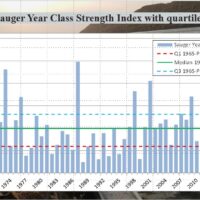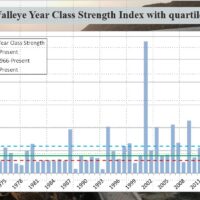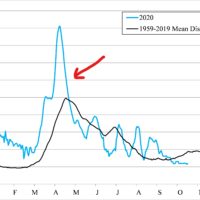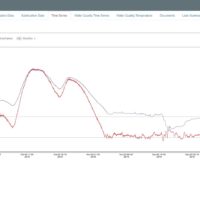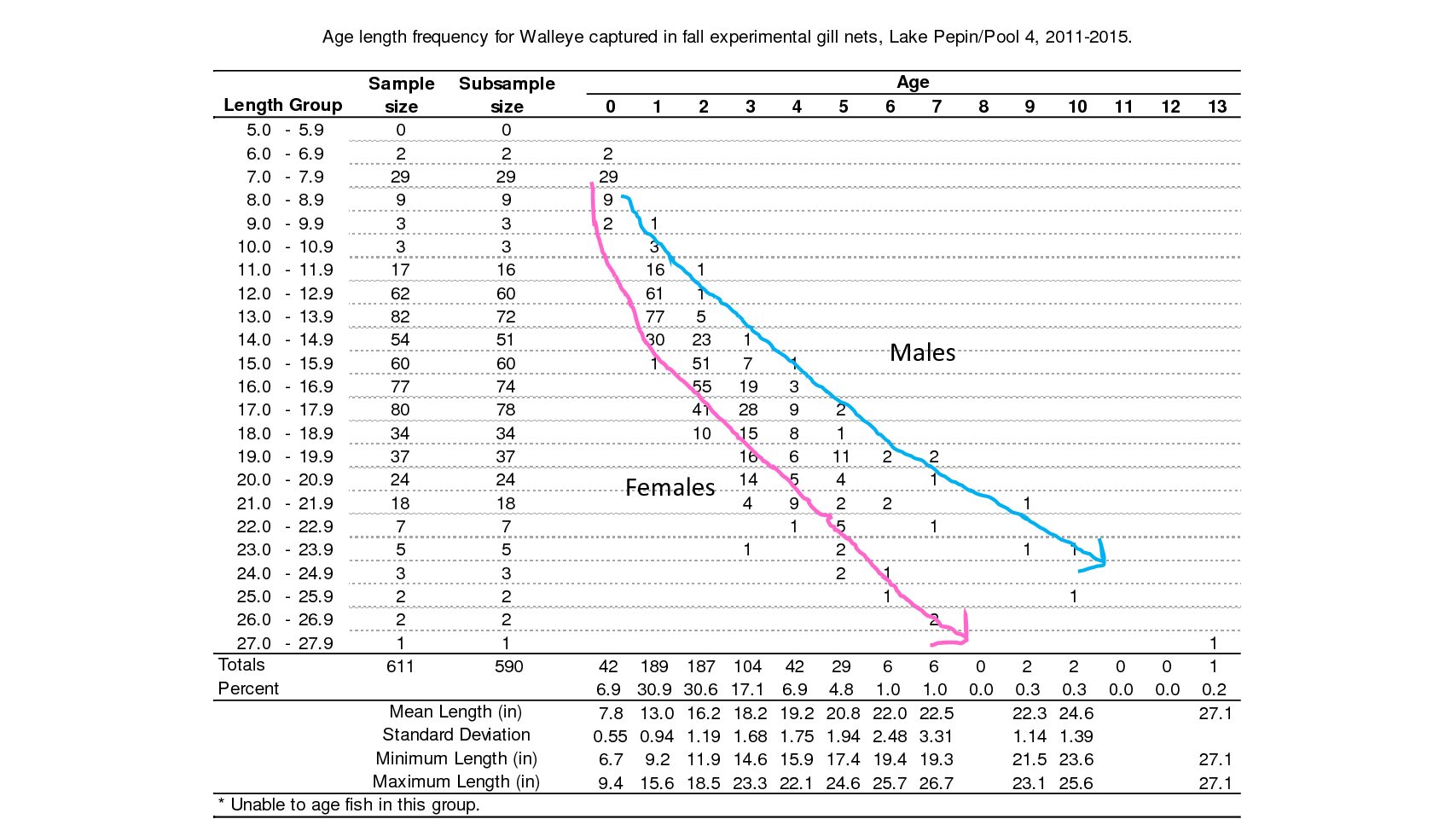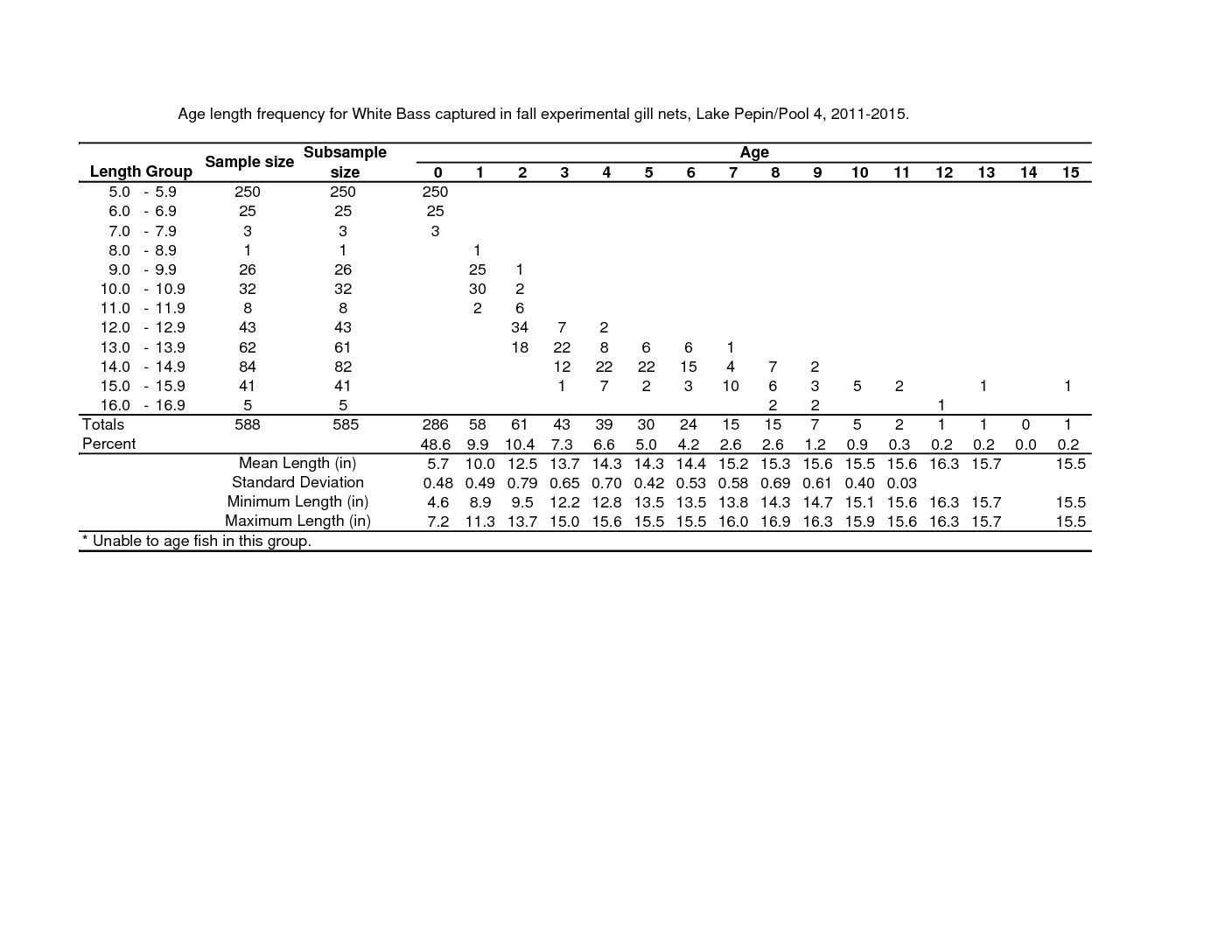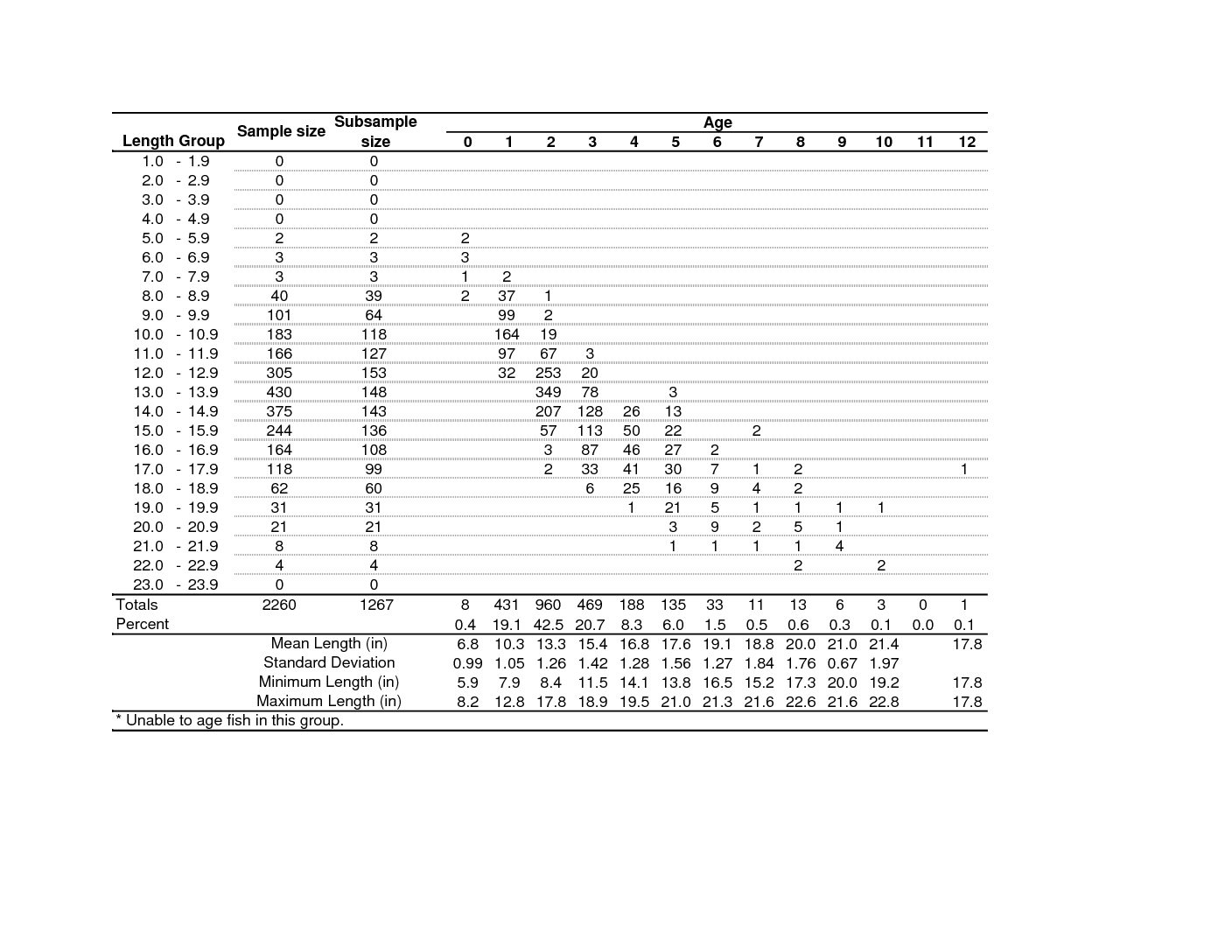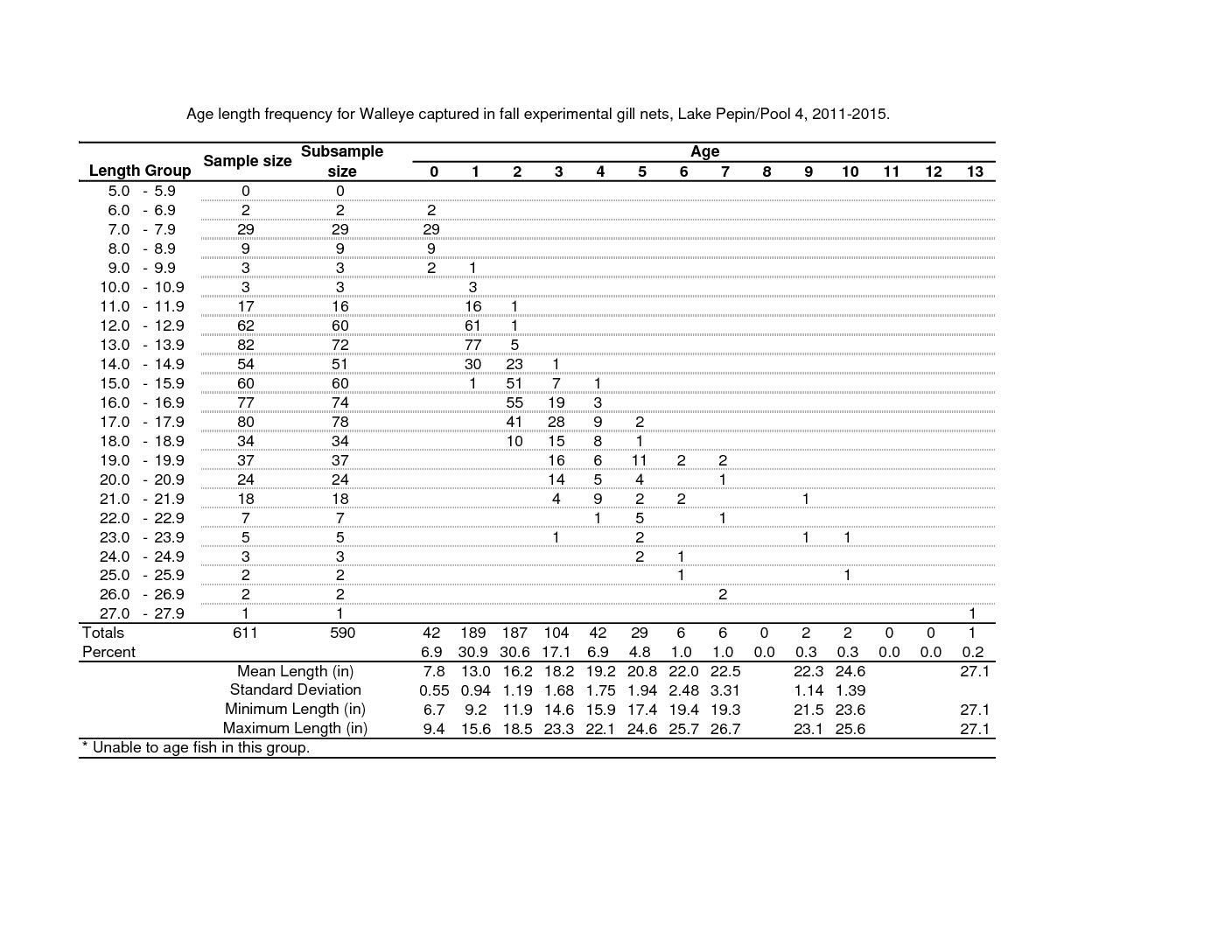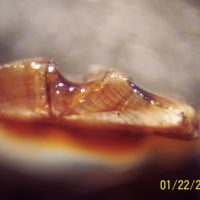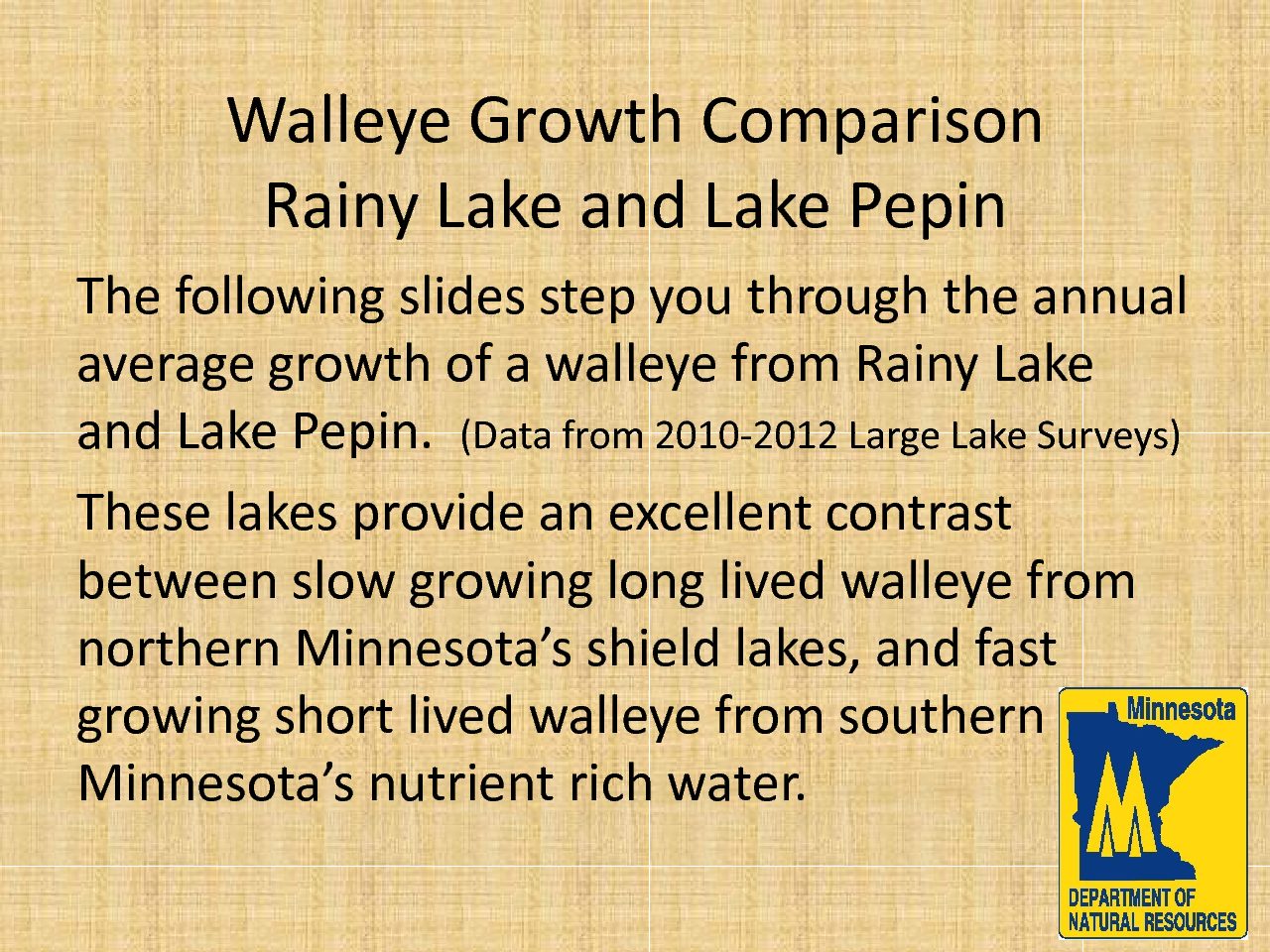Hey Tim,
I appreciate your interest in the regulations review and revision process. You are correct that when we talked about Walleye spawning and recruitment I pointed out that on Lake Pepin/Pool 4 we tend to see our biggest year classes of walleye produced during periods with relatively low stocks of larger fish. Specifically, work done in the early 2000s by Brian Ickes as part of his masters thesis looked at Walleye data collected on Lake Pepin/Pool 4 from 1965 to 1998.
What he found was that his statistical model explained 27% of the variability in walleye recruitment. If he removed a single outlier data point (1987 in this case) his base model explained 42% of the variability. So far these models used only Walleye older than Age-4 as spawners and used numbers of Age-2 fish captured 2 years later as a measure of recruitment. We all know however that rivers are complex systems so he attempted to look at other variables that might affect recruitment. Two of them were ultimately added to his model 1) the cumulative degree days in the previous August which explained another 16% of the variability (high temps in Aug likely reduce recruitment by adding stress during egg development) and 2) the minimum discharge in cubic feet per second (higher is better) during the spawning period which explained 10% of variability.
One of my predecessors updated this model to approximately 2010 and got the same basic results, and I am currently in the process of updating it again.
Interestingly, early indications are that the 2018 year class could be very good, with record catch rates of YOY walleye from both our trawl and fall electrofishing surveys. The average Lake City temperature in August (2017) was 66.81F (the second lowest in the last two decades), and the 2017 catch rate of walleye over age-4 was on the low end of what we have seen in the past decade.
I apologize for the lengthy response, but wanted to lay that out first. Now as to how that relates to our regulation proposals.
1) We have incredible amounts of data for Pool 4, but in general relatively poor (Walleye and Sauger) data for the remaining border water pools. Sampling difficulties and staff and time limitations mean that the lower pools receive far less Walleye/Sauger specific monitoring. Tailwater surveys that are done in the lower pools (primarily by the WI DNR) have documented YOY numbers below the average for 9 of the last 10 years for Sauger.
Ultimately we have to propose regulations for the entire Mississippi River border waters and though walleye and sauger regulations on Pool 4 were relatively low on our list of priorities (due to in depth monitoring) there were concerns about the lower pools and certainly a large amount of public concern, particularly about what was perceived to be excessive harvest of large fish.
One of the initial comments we received a lot was a recommendation to adopt the “Iowa Slot” (15” min with a protected slot 20”-27”, only 1 over 27”). I have some concerns about applying that regulation to Pool 4 both because of potential suppression of recruitment by high numbers of larger fish (described above), and the potential for increased summer mortality during warm water events like we experienced in 2012 (~2 weeks at 90+F surface temps). Larger fish in particular are more susceptible to mortality from these extended periods of warm water. The 1 over 20” regulation proposed for Walleye and Sauger allows some harvest throughout the population of mature fish, should act to spread out the harvest of those larger fish among more anglers during a hot “big fish” bite, and allows for harvest of a fish that would otherwise not survive release (deep hooked etc), a common criticism we hear about protected slots where all fish in a size range must be released.
2) Your second question involved the purpose of the proposed regulations. Each proposed change to a regulation has various purposes. In this case there is a large overarching goal behind our regulation review process. We wanted to evaluate regulations that were in most cases unchanged and unevaluated for 50 years to see if they fit with current management philosophies, reduce discrepancies between (MN and WI) and within (inland vs border waters) states, and to examine whether regulations were consistent with what the public was looking for from their shared resource. Through our two sets of meetings and electronic surveys (May and October) we received 850 and 1,125 responses respectively (~82,325 individual questions answered) with many additional written comments.
Additionally we wanted to look at some proactive changes that could potentially increase the resilience of our fisheries to changes that are occurring with pressure (technology and effort), climate (altered flood timing and increased heat stress), invasive species (bighead and silver carp, invertebrates, and diseases), and habitat (the pools are an aging reservoir system and loss of habitat means they are constantly getting smaller).
Most folks are familiar with how difficult it can be to “fix” a fishery that has failed. Often if regulations are used there must be extreme reductions to effectively recover populations. These are difficult to get the public to accept and generally even when successful take a significant amount of time to achieve their goals.
Our hope is to prevent the border water fisheries from developing these problems. Some of the regulations are designed to spread harvest out among individuals or over time (white bass), while others are designed to prevent over harvest by reducing bag limits to levels that creel surveys indicate are typically taken (catfish).
The Walleye and Sauger regulation proposals were designed to proactively buffer the system from changes mentioned above while allowing us to maintain opportunities like a continuous open season for anglers. The proposed regulations should distribute the harvest from a hot bite over time (number of days) and anglers, particularly the harvest of larger fish. The reduction in bag also seeks to address concerns about populations in lower pools without restricting anglers to bag limits below what they indicated they would accept in our surveys.
As usual I am happy to discuss any of these items further with folks if they are interested. My contact info should be listed below.
